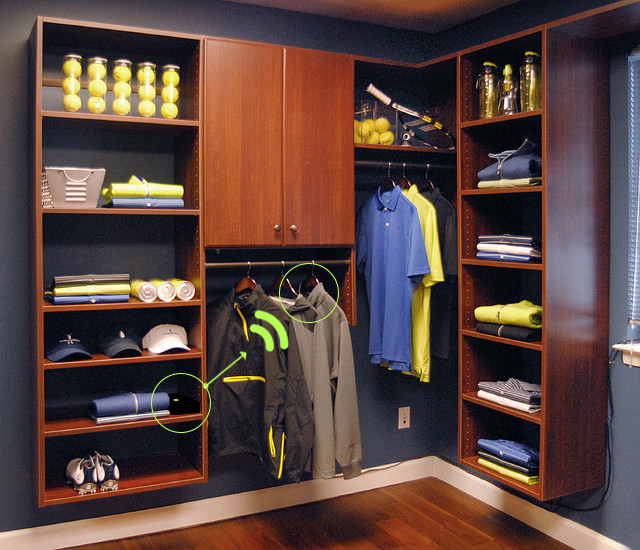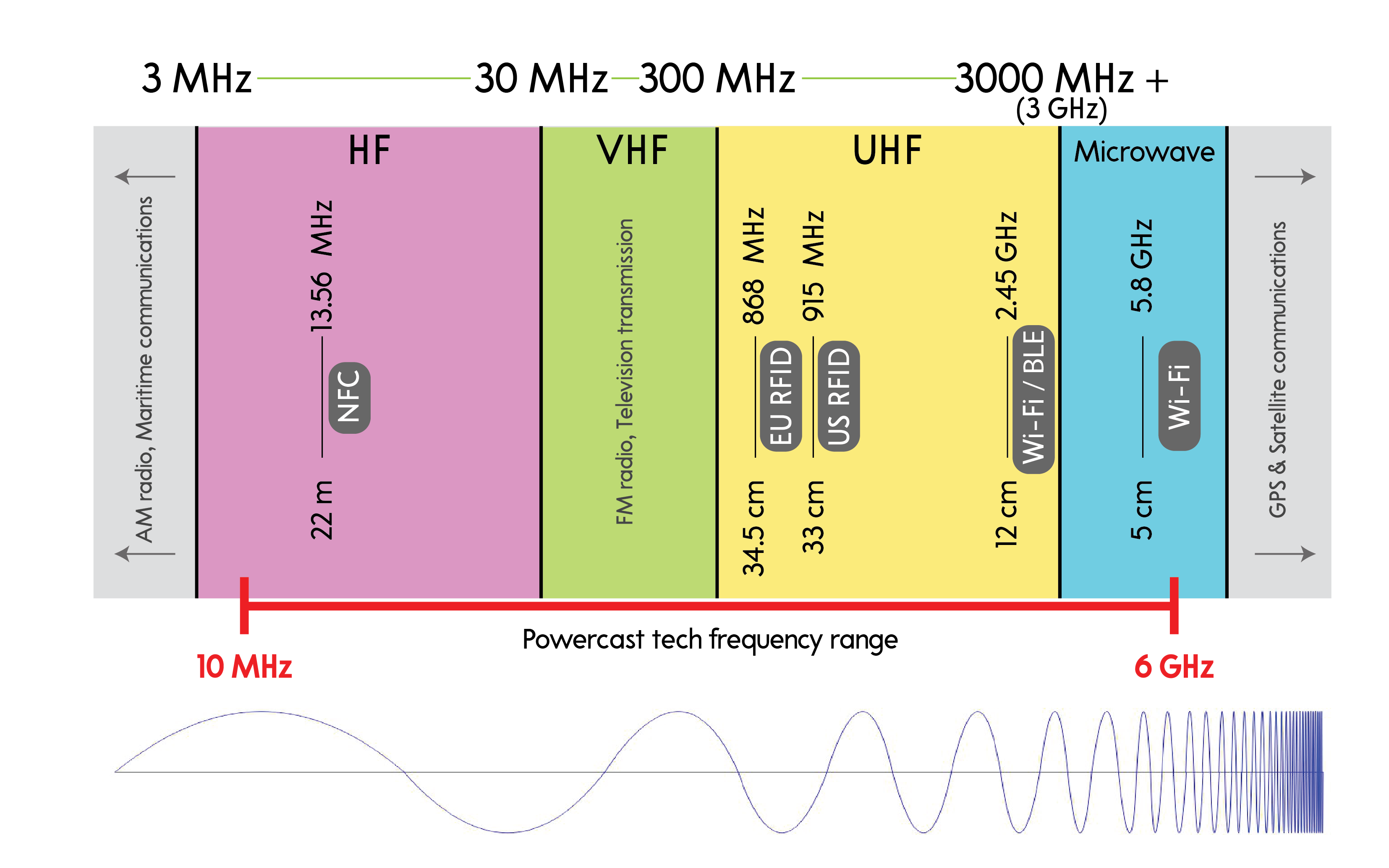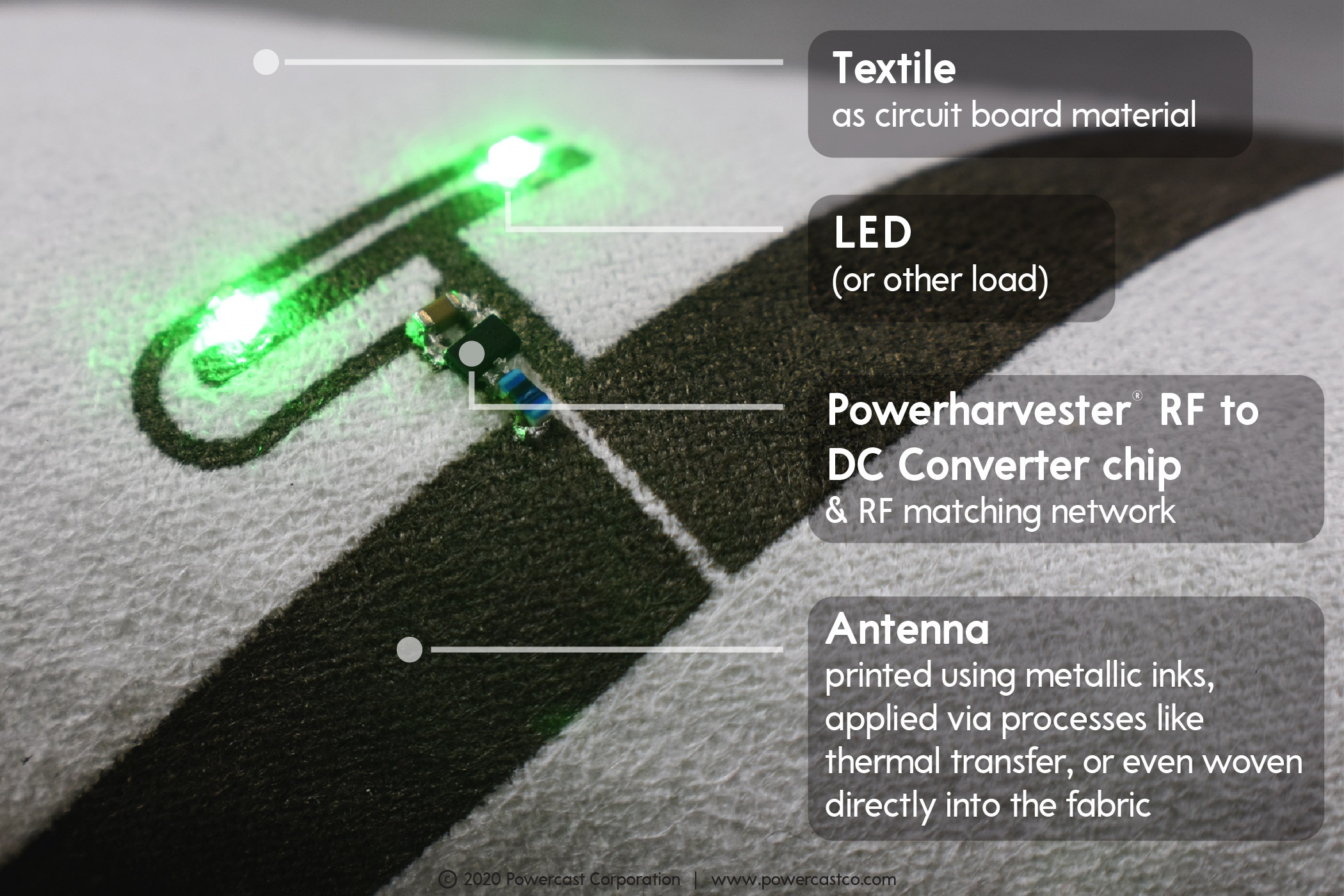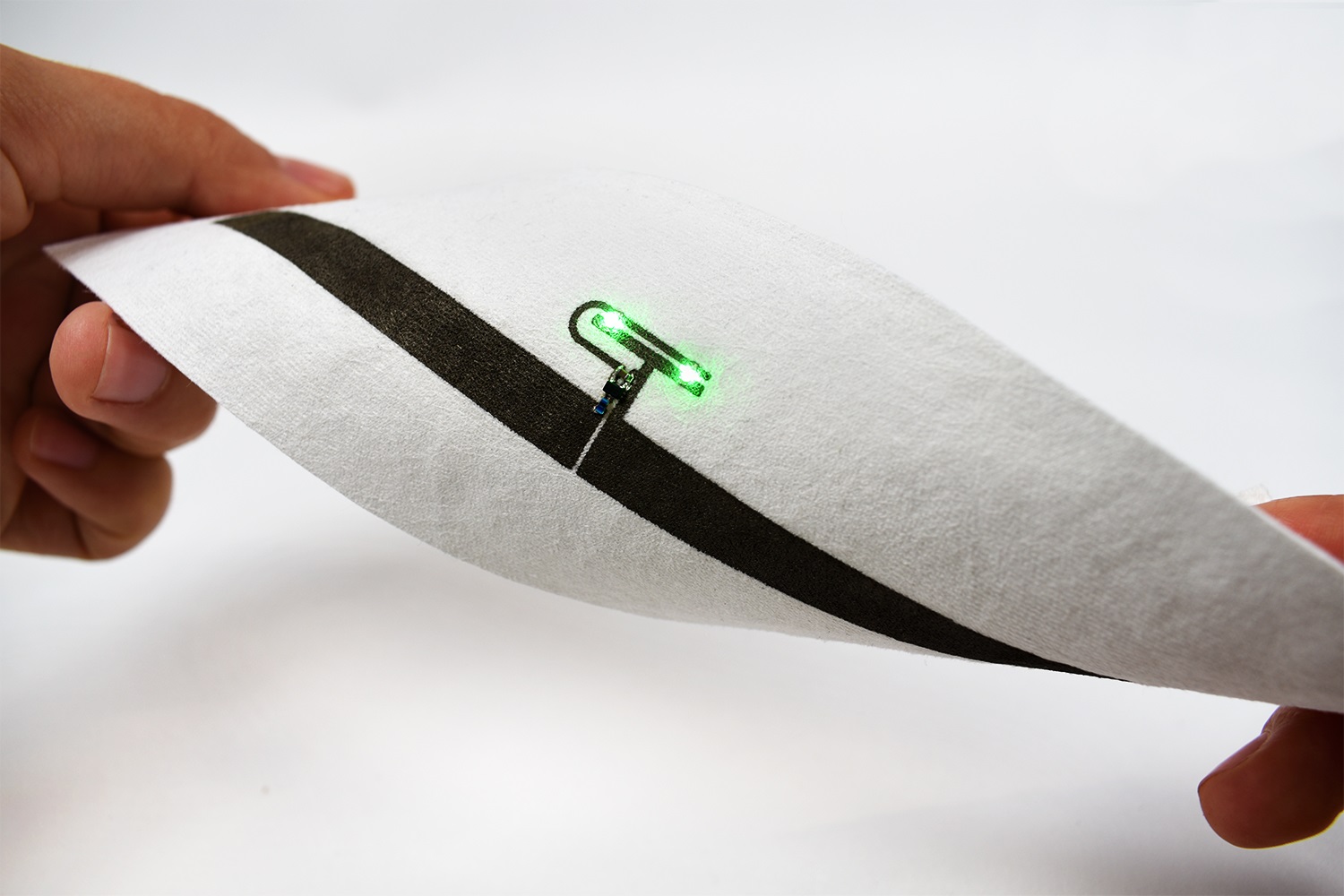Hang up your clothes to charge
Using RF technology, a wireless charging wardrobe could build a wireless power network for e-textiles and wearable technology
A runner returns home after putting in a solid 5k, checks their heart rate, maximum and peak breathing rate via a smart phone, then takes off his or her fitness tracking shirt to get ready for a shower. Instead of removing an electronics package from the garment, he or she can put it directly into the wash, because the electronics used for those readings are embedded, making the garment completely waterproof and machine washable. At the end of the cycle, the shirt hangs to dry and when hanging in the wardrobe wirelessly recharges for the next run. This may sound like an advertisement from CES 2025, but implementing a wireless charging system into devices like e-textiles and other wearables is within immediate grasp.
Charging choices
There are a variety of wireless charging technologies on the market today, including Qi (inductive coupling), magnetic resonance and ultrasound. The longest-range option is radio frequency (RF) which sends a trickle charge over the air with less need for exact placement or alignment.
An RF wireless power system consists of two sides, transmit (Tx) and receive (Rx). In this system, an RF transmit device emits radio waves at a specific frequency. An antenna and matching network then harvest that RF from the air, and a converter chip converts it into DC power.
RF design can be challenging, but design engineers can achieve solid performance as long as they take proper care in the design stage.
 Figure 1: Smart wearables stored in a wardrobe or drawer will recharge them over the air.
Figure 1: Smart wearables stored in a wardrobe or drawer will recharge them over the air.
Frequency, power level, and antenna gain are the three key elements to consider if choosing to design an RF power transmitter. The device’s country of operation shapes its design. Local frequency band allocations and power output limits dictate how much power the device can transmit and at what frequencies. For example, in the US the Federal Communications Commission (FCC) governs all radio equipment. As per Part 15 of the FCC’s rules, power fed to the Tx antenna is limited to a total of 30dBm (1.0W) and the antenna may have a gain of up to 6dBi for a total of 36dBm (4.0W) effective isotropic radiated power (EIRP). Different combinations of output power and antenna gain are allowed but the limit of 4W EIRP remains. Generally, this rule applies to all unlicensed communication devices operating across three different frequency bands: 902 to 928MHz, 2.40 to 2.483GHz and 5.725 to 5.875GHz. This means that a device for use in the US must not exceed these requirements. Restrictions on output power are especially important to note, as the receive device can only harvest as much power as is available.
Each country has its own set of similar rules with similar restrictions that vary frequency allocations, power output limits, and emission requirements for radio transmitting devices.
Designing the receive side of a wireless power network is simpler. Luckily, wireless power receivers can operate in a completely passive manner. This means that, in most cases, no local communications certification is required. Designers have three main variables to consider on the receive side, i.e. frequency, antenna gain, and expected received input power range (related to the distance from the Tx source).
Frequency
Designers can calculate the level of received RF power over a given distance in the far field using Friis transmission formula. This equation shows that lower radio frequencies tend to deliver power more efficiently than higher frequency signals under the same circumstances (same Tx power, Tx antenna gain, and Rx antenna gain).

Figure 2: Typical RF wireless power frequency ranges (Source: Powercast).
The frequency decision impacts what can be considered a suitable charging distance in the RF wireless power network (WPN). Choosing a lower frequency generally means that receive devices can operate at longer distances from the Tx source. WPNs operating at lower frequencies, like those in common RFID ISM bands, offer superior charging times. On the other hand, WPNs operating at higher frequencies, most commonly 2.45GHz, can accommodate smaller antennas on both the Tx and Rx ends. This appeals to engineers and CTOs in their joint quest for “smaller, smaller, smaller”!
How much power does the receiver need? The Friis equation tells us that the received power drops off as one over distance squared. This means that higher power wearables will need to charge at a close distance to a Tx source, while lower power sensor devices can charge at much greater distances.
Antenna gain
Higher gain antennae tend to capture more RF power but inherently become more directional. Lower gain antennae tend to be omni-directional and can receive RF power in almost all directions. In wearables, like a fitness shirt, it is possible to implement multiple receiving antennae and perform like high gain antennae and capture more RF power but also having omni-directional patterns like low gain antennae.
When shaping a WPN, frequency, antenna gain, and input power (distance) are all intertwined. Designers cannot adjust one without affecting another, so should consider all equally when designing both the wireless power delivery network and one or more receive devices.
E-textiles
Relating this to wearable technology, unlike earbuds, fitness trackers, or hearing aids which have a strict physical space constraint, a shirt or pair of shorts provides a relatively large footprint for printed electronics. The entire garment can serve as the electronic canvas for implementing circuitry, screens, buttons and one or more antennae.

Figure 3: The entire textile can serve as the electronic circuit board material.
The typical recharging scenario would be within a wardrobe where consumers would naturally hang the garment up to 1m from a closet-mounted wireless power transmitter.
Rigid or rigid-flex circuit boards are extremely limiting in the smart garment space. Luckily, when printing electronics onto e-textiles, the garment itself becomes the circuit board material. Circuitry can be directly printed using conductive materials like Liquid X’s particle-free metallic inks, or applied via thermal transfer by companies such as Conductive Transfers. These conventionally printable conductive inks and thermal trace transfer breakthroughs have opened the gates for commercialising consumer smart garments by eliminating the rigidity and fragility of traditional electronics packages.
Being able to utilise the entire garment rather than just targeted areas, allows engineers to now print in most areas where there is no existing circuitry or sensors. With this space constraint now removed from the design equation, more area is available for integrating multiple power receive antennae. This creates a larger capture area for the RF energy, increasing the overall charging speed of the garment.
Battery life
The functionality of today’s smart garments is sometimes stifled by tolerable battery size, which must also be detached for recharging and before washing the garment. A low-effort wireless recharging system could instead deliver advanced e-textiles to the everyday user.

Figure 4: Conventionally printable conductive inks and thermal trace transfer allow smart garments to flex and bend without harming the embedded electronics.
Today’s manufacturers often employ batteries that can last multiple sessions without needing recharging inbetween, because the process of disconnecting a battery pack and plugging it in can feel cumbersome to the user. If there is no longer the need to think about the recharging process, the user can instead follow their existing routine of simply washing and hanging the garment, and single-wear batteries become a viable option. A higher efficiency, lower frequency WPN can enable designers to deploy single-wear batteries, add sensors, and integrate LEDs or alarms, GPS tracking, or even bi-stable displays. The entire capacity of the maximum tolerable battery size can then be used for the duration of a single session, so manufacturers can either enhance the garment to perform additional functions, or physically shrink battery size to create a more lightweight, less bulky end product.
What lies ahead
Advanced e-textiles have been deployed within military and industrial settings, and are rapidly expanding into the consumer market as well. With a dead battery pack, the e-textiles become essentially useless. Integrating RF wireless power networks to ensure frictionless, easy to use recharging is one path to avoid such failures, but designers should establish product requirements first before designing a charging platform to meet those needs. Wired charging will only last as far as the cord can reach, and the technology is quickly approaching that juncture. An RF wireless power system can meet the charging needs of low power electronics, but it is important to consider all variables during the design process to ensure the design of high performance, wirelessly rechargeable smart garments.
The author
Maria Singer is marketing and sales manager at Powercast, the RF-based, wireless power technology company, based in Pittsburgh, USA


